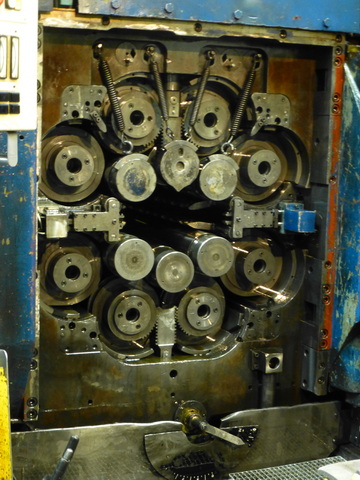
In the world of metal processing, rolling mills are essential pieces of equipment that shape and transform raw metals into various forms for industries ranging from automotive to construction. At Galaxie Corporation, where we specialize in high-quality machinery for metalworking, understanding how rolling mills work is key to appreciating their critical role in manufacturing.
A rolling mill is a machine used for reducing the thickness of metal sheets or for shaping them into specific profiles. It works by passing metal stock through pairs of heavy rollers that apply significant pressure, altering the metal’s shape. The basic concept of rolling has been around for centuries, but modern rolling mills have evolved into highly efficient, precise machines used in today’s industries.
There are various types of rolling mills, each designed for specific tasks. Some of the most common types include:
At their core, rolling mills use a series of mechanical processes to compress and shape metal into desired forms. Here’s a simplified breakdown of how rolling mills work:
One key distinction in rolling processes is between hot and cold rolling:
Rolling mills are the backbone of metal production. Whether producing thin sheets for packaging, heavy steel plates for shipbuilding, or specialized profiles for the aerospace industry, rolling mills provide the versatility and efficiency needed to meet global demand. Their precision and power make them invaluable in transforming raw metal into functional, high-quality products.
Today’s rolling mills are more advanced than ever, thanks to innovations in automation and control technology. Modern mills can precisely control temperature, pressure, and roll alignment to produce materials that meet strict tolerances with minimal waste. These advancements lead to increased efficiency, reduced costs, and better quality control.
At Galaxie Corporation, we understand the intricate workings of rolling mills and the important role they play in metalworking industries. Our selection of high-quality rolling mills and other metalworking machinery is designed to help businesses achieve the best results in their production processes. Whether you’re looking for a new or used rolling mill, our team of experts is here to help you find the right solution for your needs.
For more information on our rolling mills, other used machinery for sale or to discuss your specific machinery requirements, contact us today at Galaxie Corporation. Our team is dedicated to providing you with the tools and knowledge you need to keep your production lines running smoothly and efficiently.
Go backBe the first to see our new arrivals, plant liquidations, promotions and news.